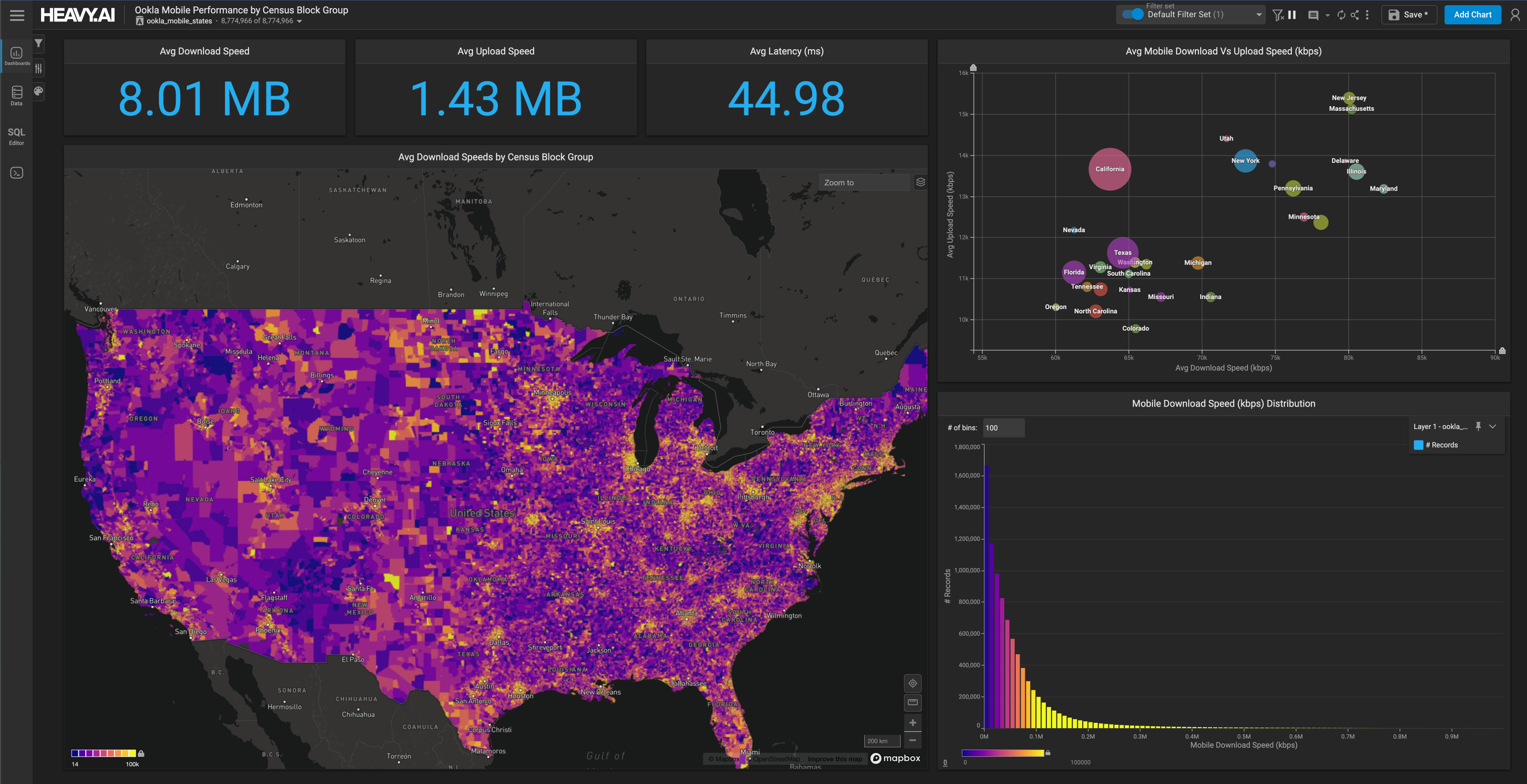
OmniSci Demonstrates the Power of GPU-accelerated Analytics in the Escalating Fight Against the Opioid Crisis
Download HEAVY.AI Free, a full-featured version available for use at no cost.
GET FREE LICENSEThe U.S. government produces some of the most socially-impactful and politically-powerful data in the world. By combining and interpreting opioid crisis data against industry datasets using OmniSci GPU-accelerated analytics, data scientists and analysts can derive fresh insights for public health services, abuse/overdose prevention, and criminal prosecution.
Starting with geospatial data, the OmniSci platform can parse insight from dozens of datasets with precision. For example, analysts can create random polygons around specific geographic areas to determine which doctors, in which specialties, are prescribing specific quantities of opioids in selected cities, broken out by the drug prescribed. Data can also be used to improve public health remedies by determining what specific resources and services are needed in various areas, down to specific zip codes. The primary data set for this demo includes 4.7M annual records, where each record contains the number of claims for a prescriber and a drug for a specific year (representing a total of 289M prescriptions).
Looking at Top Prescribers
There’s a lot to unpack here so let’s start by looking at the nation’s top prescribers of opiates. The top prescriber is Mark Murphy who has prescribed over 92,000 opioids in the four year period from 2013 to 2016.

That’s an average of 23,000 claims per year which means that even if he’s prescribing 24 hours a day, 7 days a week, and 365 days a year he would still have to write 3 prescriptions per hour. Unfortunately, we don’t have enough fidelity on the data to know how many of these were refills as opposed to new claims but we can see in our dashboard the average number of annual claims for all prescribers in the United States is 126.

While we can’t say for sure that any of this activity is fraudulent it certainly seems suspicious. Apparently law enforcement authorities agree. In 2016 Mark Murphy announced his retirement and moved his practice to Tennessee where he is currently under investigation by the FBI.
Using Cross Filters
Fentanyl is one of the strongest opioids on the market, over 100 times more powerful than morphine. This means that as little as 3mg can be enough to cause a deadly overdose. We can easily filter our dashboard to just show claims for Fentanyl by going to the chart for Claims by Drug Name and clicking on Fentanyl.

With our filter applied all of the other charts in the dashboard automatically change to filter for Fentanyl. Notice in the Claims by Specialty chart the specialty with the highest average number of annual claims is Ophthalmology. We wouldn’t normally associate eye surgery with one of the most powerful opioids on the market. Let’s click on the Ophthalmology bubble to see what’s going on.

With our Fentanyl and Ophthalmology filters applied let’s go back to the Top Prescribers chart. Notice that Mary Huebner is at the top of the list and that she’s prescribed more Fentanyl than all the other ophthalmologists combined.
Whether Huebner’s prescribing is improper is unknown, but in 2008 and 2010 the Oregon Medical Board took corrective action against Dr. Huebner. The power of GPU-accelerated analytics in OmniSci means we’re able to take a dataset of 290 million prescription claims and get to actionable insights in as little as two clicks.

Using search filters
In addition to fraud, this dataset can be used to analyze prescribers with potentially unsafe prescribing habits. For example, American Geriatrics Society classifies the muscle relaxant Carisoprodol as a drug seniors should avoid. It was pulled from the European market entirely in 2007. However, in 2010 alone health-care professionals wrote more than 500,000 prescriptions for the drug to patients 65 and older.
Let’s explore the dataset to examine the prescribing habits around this potentially unsafe drug. We can do this by finding Carisoprodol in the chart of drug names or by using a filter for Carisoprodol. We can do that by clicking on the “Add Filter” button in the dashboard and choose the prescribers_partD dataset from the dropdown. Next, select “drug name” from the list of attributes and in the contains field enter “Carisoprodol.”
Now by looking at claim details and the total_over65_claims field we can see that not only do doctors continue prescribing Carisoprodol, but some of those doctors (including the top prescriber Judy Travis) prescribe Carisoprodol exclusively to individuals over the age of 65.

Explore the data yourself
What can you find? With the OmniSci speed-of-thought analytical experience, you can ask questions and return results in record speeds. Drill deep down into an analytical rabbit hole, then reset and start from scratch, all without the frustrating waiting game of other analytics platforms. Check out the demo and let us know what you think!




